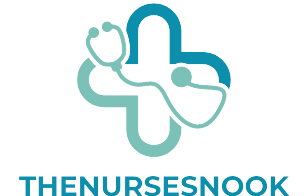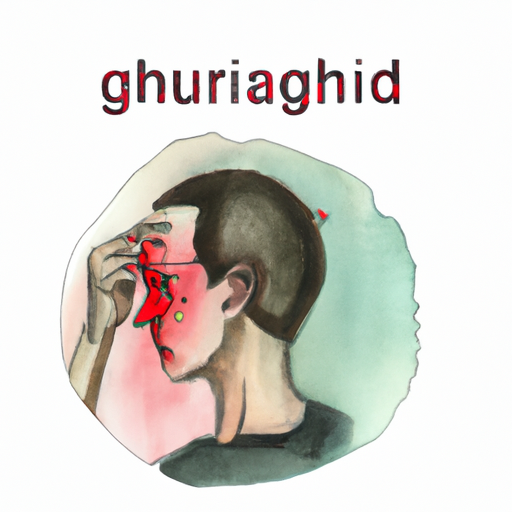Headaches are a common ailment that can disrupt our daily lives and hinder productivity. Whether it’s a dull ache or a pounding sensation, headaches can vary in intensity and duration, making it crucial to understand their anatomy, causes, and symptoms. In this comprehensive article, we will delve into the various aspects of headaches, including their types, diagnosis, and treatment options. From medical approaches to natural remedies and lifestyle changes, we will explore the most effective ways to find relief from this debilitating condition. So, if you’re tired of letting headaches control your life, read on to gain a deeper understanding of how to manage and prevent them.
1. "Understanding the Anatomy of a Headache: Symptoms, Causes, and Types"
Headaches are a common ailment that can range from mild discomfort to debilitating pain. Understanding the anatomy of a headache can help individuals identify the symptoms, causes, and types, enabling them to seek appropriate treatment and relief.
Symptoms of a headache can vary depending on the type and severity. The most common symptom experienced by individuals is pain or discomfort in the head or neck region. This pain can be throbbing, pulsating, or constant, and it may worsen with physical activity or exposure to certain triggers. Other accompanying symptoms can include sensitivity to light or sound, nausea, vomiting, and even visual disturbances.
The causes of headaches can be multifactorial, and they differ based on the type of headache. Tension headaches, the most prevalent type, often result from muscle tension and stress. On the other hand, migraines, a more severe form of headache, are believed to be caused by a combination of genetic, environmental, and neurological factors. Triggers such as certain foods, hormonal changes, lack of sleep, or excessive noise can also contribute to the onset of migraines.
Cluster headaches, though less common, are extremely intense and occur in clusters or patterns, often around the same time each day. This type of headache is typically localized to one side of the head and is accompanied by symptoms like redness or swelling of the affected eye, nasal congestion, or excessive tearing.
Understanding the different types of headaches is essential for proper diagnosis and subsequent treatment. A healthcare professional can evaluate the symptoms, take into account the patient’s medical history, and perform necessary tests to determine the precise cause of the headache. This diagnosis is crucial as it helps to rule out underlying medical conditions that may require specific treatment.
Treatment options for headaches can vary depending on the severity and type of headache. For mild tension headaches, over-the-counter pain relievers such as acetaminophen or ibuprofen can provide temporary relief. However, it is important not to rely on these medications excessively, as they may lead to medication overuse headaches.
In cases of migraines or more severe headaches, prescription medications may be necessary to manage the pain and reduce the frequency and intensity of the episodes. These medications can include triptans, anti-nausea drugs, or preventive medications taken regularly to reduce the occurrence of migraines.
In addition to medications, lifestyle changes and self-care practices can also play a significant role in managing headaches. This can involve identifying and avoiding triggers, maintaining a regular sleep schedule, managing stress through relaxation techniques or therapy, exercising regularly, and adopting a healthy diet.
In conclusion, understanding the anatomy of a headache, including its symptoms, causes, and
2. "Diagnosing and Managing Headaches: An In-depth Look at Medical Approaches and Treatments"
Diagnosing and Managing Headaches: An In-depth Look at Medical Approaches and Treatments
Headaches are one of the most common ailments experienced by individuals of all ages. While they can often be managed with over-the-counter pain relievers and lifestyle changes, there are instances where medical intervention becomes necessary. In this section, we will delve into the various medical approaches and treatments available for diagnosing and managing headaches.
When it comes to diagnosing headaches, healthcare professionals primarily rely on a thorough medical history and physical examination. This includes discussing the frequency, intensity, and duration of headaches, as well as any accompanying symptoms. Additionally, certain diagnostic tests may be conducted to rule out underlying conditions that could be causing the headaches. These tests may include blood tests, imaging studies such as CT scans or MRI, and lumbar puncture to analyze the cerebrospinal fluid.
Once a diagnosis has been established, the appropriate treatment plan can be devised. The treatment approach for headaches typically depends on the underlying cause and the type of headache experienced. For tension headaches, which are the most common type, over-the-counter pain relievers like acetaminophen or nonsteroidal anti-inflammatory drugs (NSAIDs) are often recommended. These medications help alleviate pain and reduce inflammation.
For individuals suffering from migraines, a more comprehensive treatment plan may be necessary. This can include a combination of medication, lifestyle modifications, and preventive measures. Nonsteroidal anti-inflammatory drugs, triptans, ergotamine derivatives, and anti-nausea medications are commonly prescribed to relieve the symptoms associated with migraines. In some cases, preventive medications such as beta-blockers, antidepressants, or anticonvulsants may be recommended to reduce the frequency and severity of migraines.
In addition to medication, lifestyle changes play a crucial role in managing headaches. These changes may include maintaining a consistent sleep schedule, practicing stress management techniques such as relaxation exercises or meditation, regular exercise, and avoiding triggers such as certain foods, bright lights, or strong odors.
In more severe cases or when other treatment approaches fail to provide relief, invasive procedures may be considered. These procedures aim to block or disrupt pain signals in the nerves or blood vessels responsible for causing headaches. Nerve blocks, occipital nerve stimulation, and Botox injections are among the options available for individuals with chronic or debilitating headaches.
It is important to note that self-diagnosis and self-medication for headaches can be risky. If you are experiencing persistent or severe headaches, it is crucial to consult a healthcare professional for an accurate diagnosis and appropriate treatment plan. They can help determine the underlying cause of your headaches
3. "Exploring Natural Remedies and Lifestyle Changes for Effective Headache Relief"
Headaches are a common ailment that affects millions of people worldwide. While there are various medical treatments available to alleviate headaches, many individuals prefer exploring natural remedies and lifestyle changes as an effective means of finding relief. These alternative approaches often focus on addressing the underlying causes of headaches and promoting overall well-being.
One natural remedy that has gained popularity is the use of essential oils. Certain oils, such as lavender, peppermint, and eucalyptus, are known for their soothing properties and can be applied topically or inhaled to provide headache relief. A gentle massage with essential oils can help relax tense muscles and promote relaxation, reducing the intensity of the headache.
Another widely practiced natural remedy is acupuncture. Originating from traditional Chinese medicine, acupuncture involves the insertion of thin needles into specific points on the body. This technique is believed to stimulate the flow of energy and relieve pain. Research suggests that acupuncture can be effective in reducing the frequency and severity of headaches, making it a valuable alternative for those seeking natural treatments.
In addition to specific remedies, making certain lifestyle changes can also have a significant impact on headache management. One crucial aspect is maintaining a healthy sleep routine. Lack of sleep or poor sleep quality can trigger headaches in susceptible individuals. Establishing a regular sleep schedule, ensuring a comfortable sleeping environment, and practicing relaxation techniques before bed can improve sleep patterns and reduce the occurrence of headaches.
Stress management is another vital lifestyle change that can help alleviate headaches. High stress levels often contribute to tension headaches or migraines. Engaging in relaxation techniques, such as deep breathing exercises, meditation, yoga, or regular physical activity, can significantly reduce stress and promote overall well-being. Additionally, incorporating stress-reducing activities into daily routines, such as spending time in nature, practicing hobbies, or socializing with loved ones, can also provide relief from headaches.
Dietary modifications can also play a role in headache management. Some individuals find that certain foods or additives, such as caffeine, alcohol, processed meats, or artificial sweeteners, trigger headaches. Keeping a food diary to identify potential triggers and then avoiding or limiting their consumption can be beneficial. Instead, incorporating a well-balanced diet with plenty of fruits, vegetables, whole grains, and lean proteins can support overall health and potentially reduce the frequency of headaches.
While natural remedies and lifestyle changes can be effective in providing headache relief, it is essential to remember that not all approaches work the same for everyone. It is recommended to consult with a healthcare professional before implementing any new treatment regimen, especially if headaches are severe, persistent, or accompanied by other concerning symptoms.



